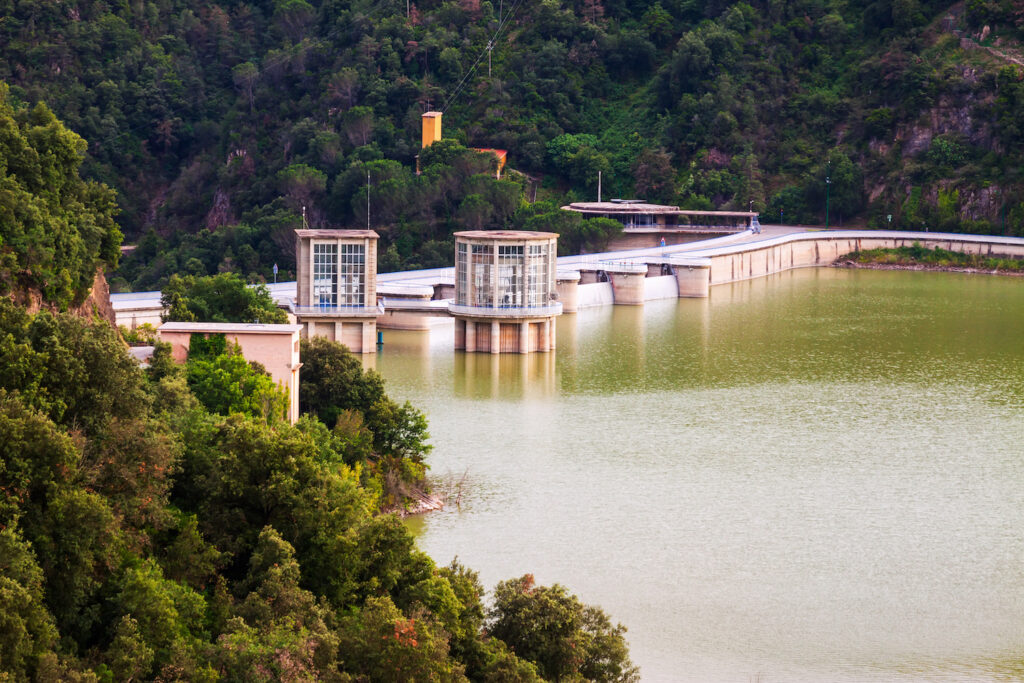5 high-impact initiatives in the Philippine water infrastructure sector
Blogs
June 6, 2023

Due to the country’s geography and uneven population distribution, the Philippines has always had serious challenges in providing access to safe drinking water to its citizens. Today, the country’s water sector policymakers also have to contend with rising sea levels, changing global climate patterns, groundwater pollution, and severe urban overpopulation.
Thankfully, the Philippines is managing to overcome these water security issues, thanks in large part to several recent initiatives to improve water infrastructure throughout the country. In this article, we’ll look into some of the recent water infrastructure initiatives that have made a positive impact in improving the Philippines’ water security.
1) The development of municipal water systems in provincial cities
While the country has long had problems with its various water systems, its rural water infrastructure remains the most underdeveloped. Fortunately, things have already changed for the better in many provincial cities, thanks to forward-thinking infrastructure developers such as Balibago Waterworks, a water utility provider in which Aboitiz InfraCapital (AIC) has a minority stake.
Balibago Waterworks is currently the largest and most efficiently operated provincial water utility operator in the Philippines. With a presence spanning 11 regions and 20 provinces, Balibago Waterworks is already changing lives for the better by updating old systems and implementing globally recognized best practices and technologies.
2) New water treatment facilities
Groundwater pollution is a serious threat to the country’s aging water infrastructure, which, in many places, is reliant on slow-replenishing underground aquifers. This has become a major problem as the country’s cities continue to grow at a massive pace, far outstripping these aquifers’ natural replacement rates.
The adoption of modern water treatment technologies and methods is already providing relief to previously water-insecure parts of the country. In Lipa and Malvar, Batangas, AIC’s Lima Water Corporation (LWC) is using some of the most advanced wastewater management technologies to provide clean water to several multinational companies based in Lima Technology Center. The use of treated water by some of the country’s largest investors is a major vote of confidence in the water treatment technologies used by LWC, potentially opening the way for them to be integrated into other water systems throughout the country.
3) Water infrastructure facilities powered by green energy
Modern water systems require a lot of energy, and their energy requirements can grow significantly when wastewater or desalinization technologies are used. Unfortunately, not all energy sources are good for the environment.
In particular, the fossil fuels that power most of the Philippine electrical grid are now widely understood to be a major contributor to climate change. This is especially problematic as climate change is, in turn, a contributor to ongoing water insecurity in the Philippines. Given this, the power for water infrastructure should be sustainably sourced when possible.
Fortunately, this pivot towards sustainable energy is already happening. In Davao City, the Apo Agua Infrastructura water treatment project will source power from an onsite hydroelectric facility that taps the Tamugan River. This is the same river whose waters are being treated by the Apo Agua facility to replenish the Davao City Water District’s beleaguered underground water sources.
4) Future desalination projects
The major irony of the Philippines’ current water insecurity is the fact that, as an archipelagic domain, the country has vast water resources. However, most of the country’s water resources are seawater, thus requiring expensive desalination before they can be used for drinking or irrigation. While desalination technology has advanced significantly and becomes more accessible in recent years, it remains expensive and energy-intensive, making it an impractical solution for many of the Philippines' communities—until now.
Today, AIC is exploring the use of desalination technologies that have been vetted in Singapore to supplement freshwater reserves in the Metro Cebu Water District. Singapore’s experience with desalinated water shows that it is possible to produce pure, desalinated water at scale. Likewise, AIC’s experience in running various water infrastructure projects throughout the Philippines shows that it is prepared to take on and succeed in critical desalinization projects.
5) The Philippine Water Supply and Sanitation Master Plan (PWSSMP)
The Philippine Water Supply and Sanitation Master Plan (PWSSMP) is a massive national effort to improve Philippine water security according to each region's unique requirements. It was launched by the National Economic and Development Authority (NEDA) to help the country’s population achieve universal access to clean water and proper sanitation by 2030.
As with previous national initiatives to improve the country’s water systems, the geographic diversity and archipelagic nature of the Philippines have proven to be a major challenge in helping the NEDA and its hundreds of partners meet the plan’s goals. However, thanks to the efforts of thousands of individuals working in the public and private sector, the PWSSMP is likely to meet most, if not all, of its goals, laying the foundations for national water security and paving the way for a better quality of life for all Filipinos.
A water-secure Philippines is now within reach
The ongoing improvements in municipal water systems, expanding use of cutting-edge water treatment technologies, wider application of green energy sources for water systems, breakthroughs in desalination projects, and implementation of the PWSSMP are all bringing the Philippines the closest it has ever been to true water security in its history. But while all these initiatives are steps in the right direction, achieving water security is a challenge that will require action from all Filipinos.
To this end, infrastructure developers, the national government, LGUs, and everyday Filipinos have to work to mitigate different issues threatening our water supply and distribution systems. By understanding the challenges that these high-impact initiatives are meant to address, Filipinos can better avoid the needless waste and environmental destruction that threaten our country’s water security.


























